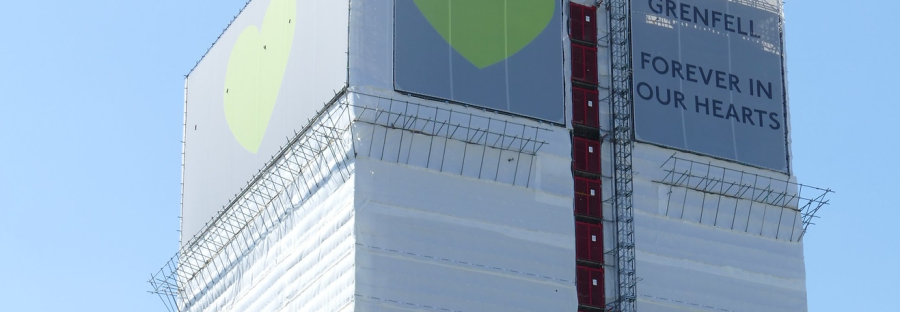Grenfell Fire – two years on, but many buildings in Greater Manchester still have dangerous cladding
- Hundreds of buildings continue to be covered in flammable ACM cladding
- Today marks the two-year anniversary of the Grenfell Fire
- Grenfell campaigner and residents call for risk assessments on all high rise buildings
Today marks the two year anniversary of the Grenfell tower fire which tragically took the lives of 72 people and displaced multiple families out of their homes.
The tragedy brought focus onto fire safety and building construction. It recently emerged that concerns around the safety of these buildings were raised with senior politicians just weeks before the Grenfell fire with Inside Housing reporting that politicians failed to act.
The ongoing Grenfell inquiry will examins such claims and any individual failings that led to the deadly fire.
Since the disaster, the government has spent £600m removing dangerous Grenfell-style ACM cladding from buildings around the UK. Despite this there are still 328 buildings covered in such cladding, including many within Greater Manchester.

ACM cladding is just one of many types of flammable cladding on high rise buildings. The government is currently testing other products such as High Pressure Laminates (HPL) to assess the dangers posed.
Dr Jonathan Evan who was part of the team testing the Grenfell-style cladding told the BBC that some non-ACM products are “destined to fail“.
Tower block residents are currently unable to access funds to replace non-ACM cladding despite being subject to legal notices by fire and rescue services. This has led to individual residents footing the bill.
The number of buildings potentially affected by non-ACM cladding runs into the thousands.
Earlier this week Grenfell United, the campaign group set up by survivors of the Grenfell fire visited the NV building in Salford Quays. They projected the plight of the residents onto the dangerous cladding hope to raise awareness.

In 2017 the NV building was assessed and found to have dangerous non-ACM cladding and faults with the building’s fire blocks which form part of the fire system.
Residents are still living with the flammable cladding and last week received bills up to £30,000 to replace the cladding as the building’s owners have refused to pay.

NV resident Phil Morgan said: “There is a case for the government to pay for that. Our frustration is that when you buy a house you expect it to be safe. But to be told after that that it’s not safe and expected to be paid to put it right it’s very frustrating.
“Builders were happy to create these building with this cladding, they thought it was ok to use. They pocket the profit so there is responsibility on the builders and they should think about what they were doing”
We spoke to Tiago Alves, a survivor of the Grenfell fire and member of Grenfell United during his visit to the NV building.

He said: It does not make a difference if it is ACM or non-ACM. If it is flammable it is flammable
“For many years the construction industry has cut corners especially around fire safety.”
Tiago and residents of the NV building we spoke to called for all high rise and high risk buildings to have the most stringent safety checks to detect these “cut corners”.

Hyde Homes, a public housing authority conducted ‘Level 4 fire risk assessments’ on all of their high-rise tower blocks, with all 86 found to have issues.

These issues, including missing fire blocks, have also been found on new build homes and tower blocks such as the NV building.
The level 4 risk assessment will check all aspects of the buildings fire defences and will ensure the building was built and maintained to standard.
Tiago added: “I feel like that (real change) can only happen after phase one and two of the Grenfell inquiry have finished followed by the criminal investigation.
“Only when they realise that something like this will become criminal and the regulations change, will that be enough to scare the building industry into not cutting corners and will stop them putting themselves in a position where something like Grenfell can happen again.”
Hyde Homes has set a precedent, being responsible landlords protecing their residents allowing them to sleep at night knowing that they are safe. Until these checks have all been carried out it will be impossible to know how many buildings in the UK have similar safety concerns.
The governement is set out to put in place the recommendations of the Hackett report over the next few years and only time will tell if these go far enough.
- Additional reporting by Alex Candlin


